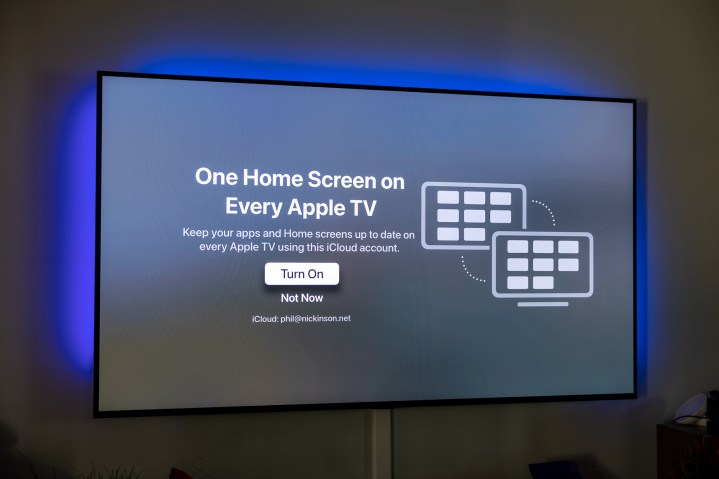One of the benefits of being Digital Trends is that we get to test a lot of things that simply aren’t easily available or replaceable should they not work out for the average person. That’s why we put so much work into testing TVs, for one example. Or full soundbar setups, for another.
Other times it’s because we’re able to take products for a test drive before they go on sale. Like video games, or computers and phones. That’s good because it helps you make a relatively expensive and important purchase decision.
Streaming sticks and devices of that ilk, however, are pretty close to being disposable commodities. Things like Roku devices, a dongle from Amazon Fire TV, or even the Chromecast with Google TV — they’re mostly relatively inexpensive. Chances are you’ll even have more than one at home. Heck, even the high-end stuff from Apple and others generally lands below $200, and that window really has shifted more toward $100 in recent years.
But that doesn’t make what we do any less important. We take this stuff seriously because it’s what we do. So here’s how we test streaming video sticks and dongles and other hardware.
More on the process
What’s in (and on) the box?
Pretty much every streaming device has the basics in common. You’ve got the hardware itself — be it a stick or a dongle or a box or whatever. The “form factor,” as we awkwardly call it, really doesn’t matter too much. It’ll plug into a TV with an HDMI cable, and have some sort of cable for power. And there almost certainly is a remote control.

We like to take a look at how simple companies make that initial experience. Is it easy to get out of the box? Is the packaging annoying to open? Does it use recycled (or recyclable) materials? Or is it loaded with plastic? The bottom line here is that simpler, generally, is better.
What accessories are included? If the remote uses disposable batteries, are they in the box? Is there an HDMI cable? Are there any other options for audio? That sort of thing.
Does the streaming device have a plethora of ports and other hardware features? Or is it a no-frills experience? (And does that matter?)
And then there’s what’s on the box itself. Is it a veritable NASCAR uniform, full of partner companies’ logos, or features that might or might not matter?
The setup experience
It really should only take a minute or three to get any streaming device ready to go. Depending on your home setup, the hardest part may well be just getting to the back of the TV. That’s not the fault of the streaming device, though it is a consideration depending on where your TV lives. Some dongles may include HDMI extenders. Or you might just be left to figure it out.

Once things are plugged in? That’s when the real work begins. What is the initial setup experience like? There’s a good chance you’ll end up having to wait for a first-boot software update, which actually is a good thing because you’re on standby early in the process, and not once you’re fully invested and ready to go. (That also means you’ll be working on the newest version of the setup process.)
From there, just how easy is the setup experience? Does it require a phone? Or can you do everything with the remote? Are there any shortcuts to the process, like if you sign in with an account attached to the same ecosystem the streaming device falls in? If you’re upgrading from one like device to a newer version (or picking up a second device, too), do you have to install everything from scratch? Or will apps and settings transfer over?
And while this often is a feature of apps themselves and not necessarily the hardware or the platform, will you have to log back into each and every app, one at a time?
Basic usage
Then there’s the matter of whether things work the way they’re intended. Is the resolution correct? Do all of the expected specs and features work out of the box? Or do you have to go into the settings to enable something like Dolby Vision or Dolby Atmos? And, for that matter, how many of the hallowed specs boxes does the device check, and does that match up with the price?

Is the home screen laggy as you use the remote control to navigate your way around? Or are animations quick and responsive? How long do apps take to launch? Is it easy to get back to the home screen, or to hop from one app to another?
Speaking of apps — are you able to get all the apps you want? Or is the App Store lacking?
And what about extras, such as smart home control, or other features exclusive to whatever platform on which you’re working?

Then there’s the matter of the remote control. That’s no small thing, given that it’s likely something you’re going to be using a lot. Is it comfortable to hold? Is it easy to lose? And if you do lose it — when you lose it, more likely — are there any features that’ll help you find it? Does it have custom function buttons? Or branded shortcuts that hopefully won’t be rendered obsolete if the corresponding streaming service is shut down? Does it have voice control?
What about software updates? Does the platform issue regular updates with new features and bug fixes? What about security updates? And can it install those updates in the background and reboot overnight? Or does it require you to seek out and install the update manually?
How long will it last?
This actually is a tough question, given that we have no idea how long your $50 dongle will last once you plug it in. But really what we look at is, in the general sense, how long a given device on a given platform tends to be considered viable. A higher price tends to dictate how much hardware you get, and that may well dictate how long the whole thing is still useful, along with software updates. Or it may not.
On the other hand, if we’re talking about a low-cost dongle that you won’t mind replacing every couple of years? Then it’s not as big a deal.
Editors' Recommendations
- The 10 most popular streaming services, ranked by subscriber count
- Best streaming devices for 2024: Apple TV, Roku, Fire TV, and more
- There’s only one streaming device that lets you escape ads
- Amazon is giving you 6 months of MGM+ when you buy a new Fire TV
- What is Android TV? Google’s smart TV platform fully explained




